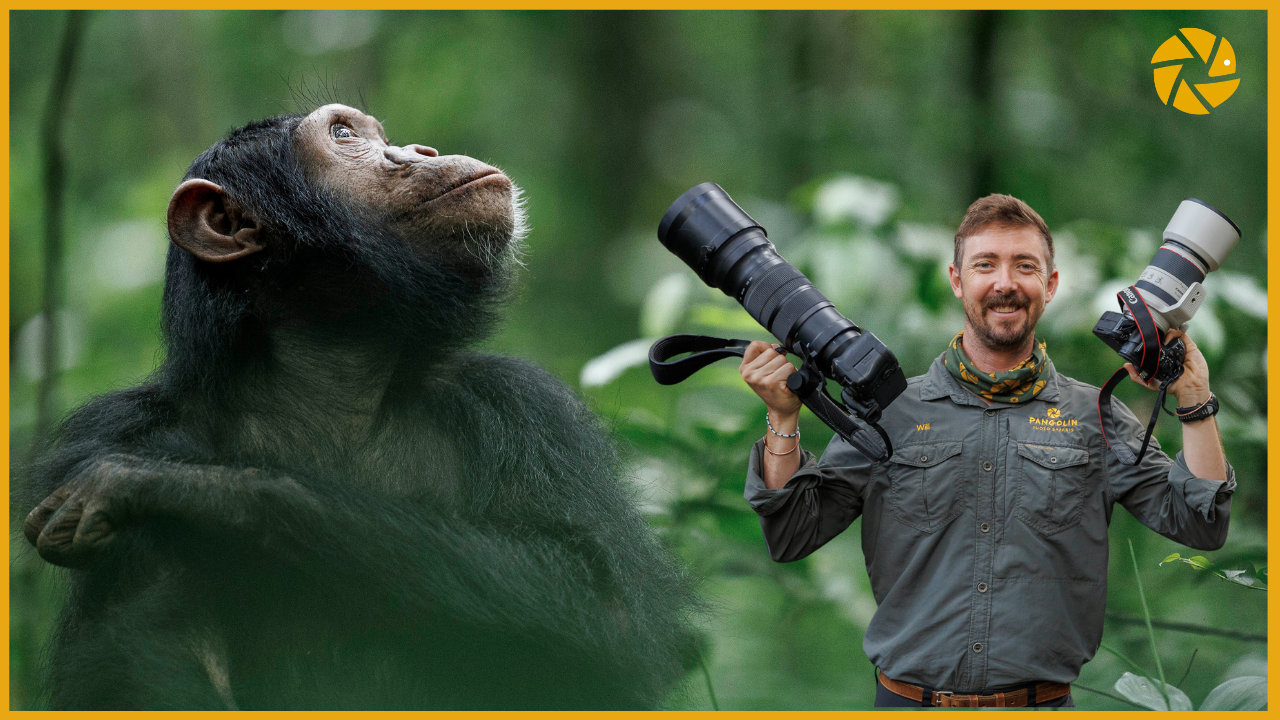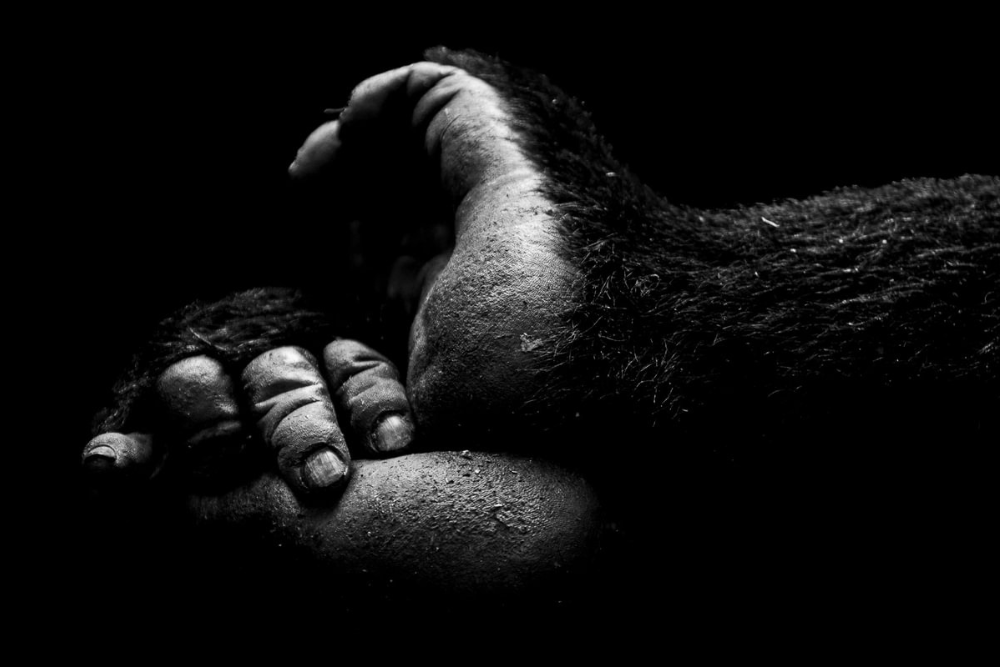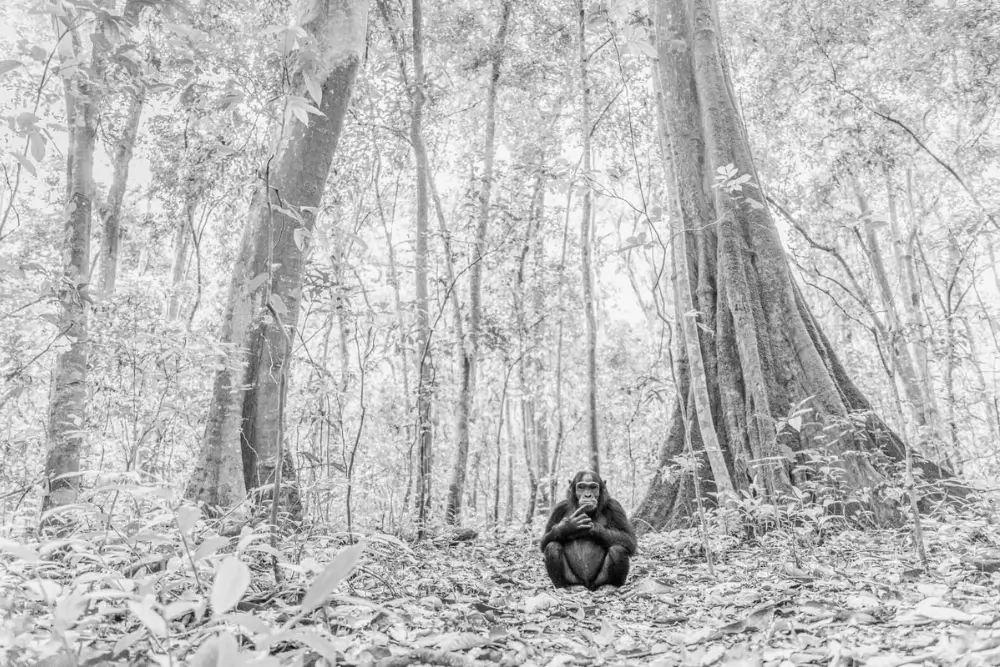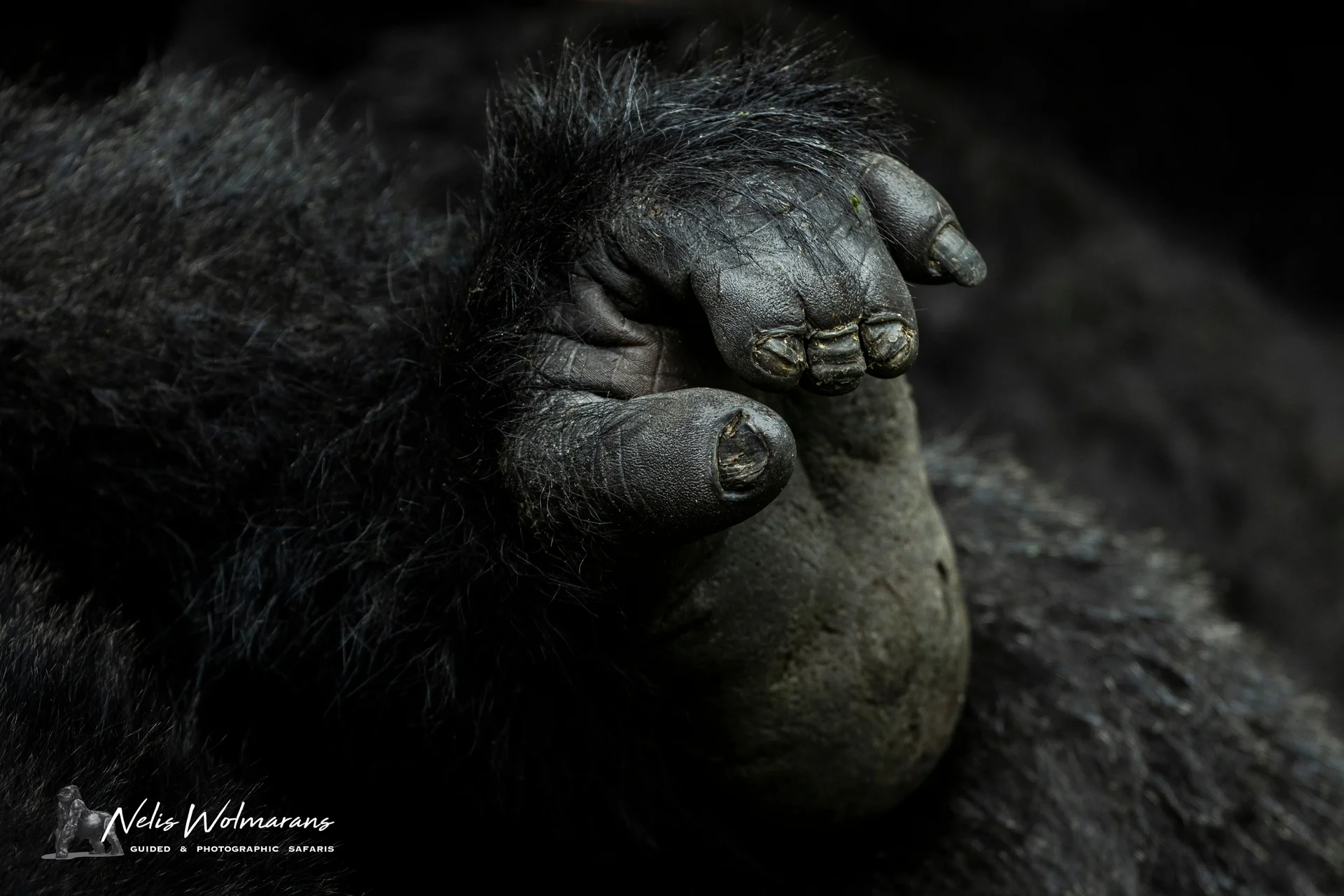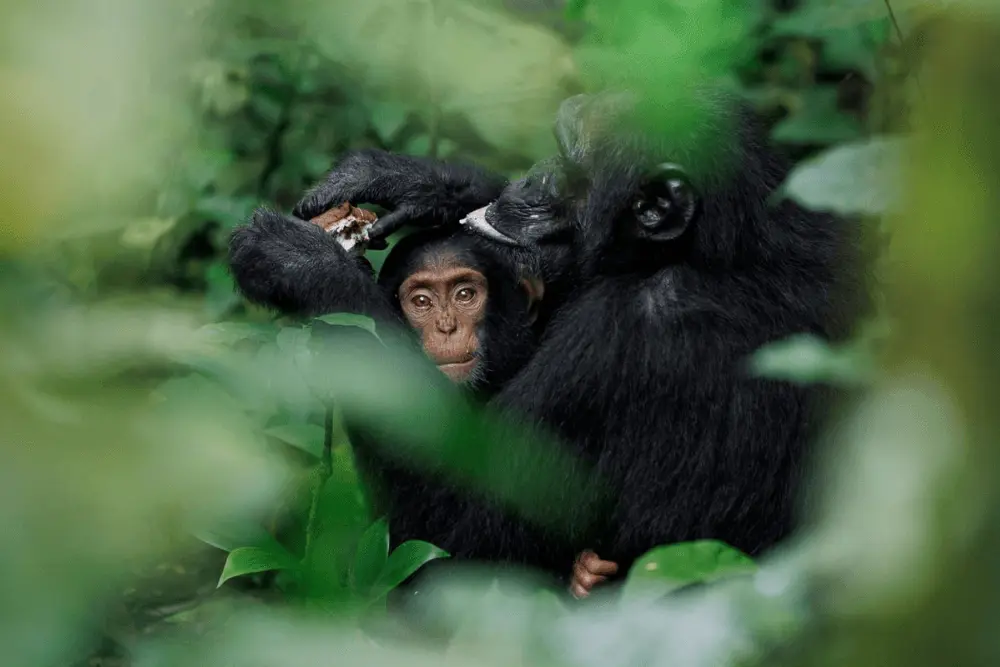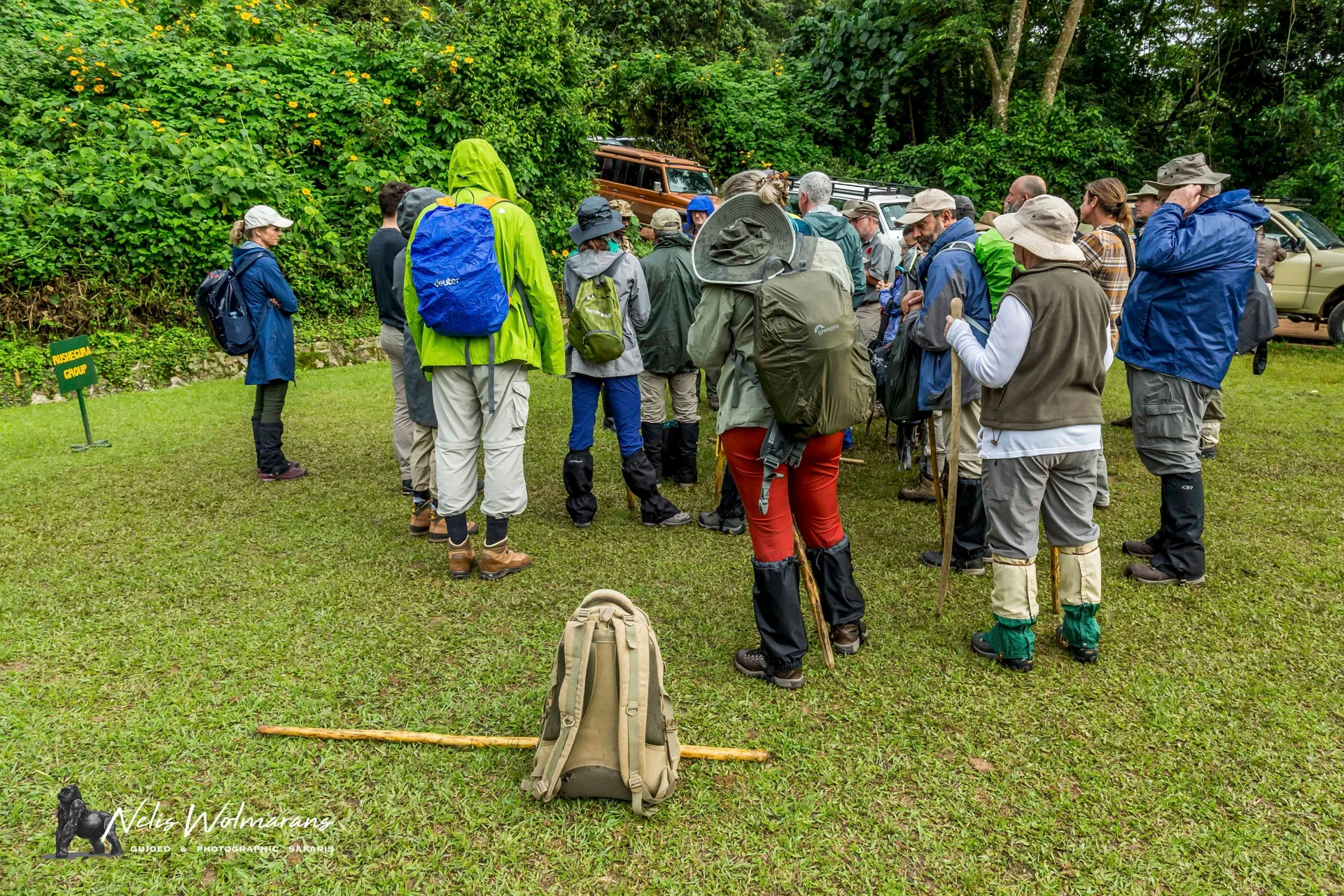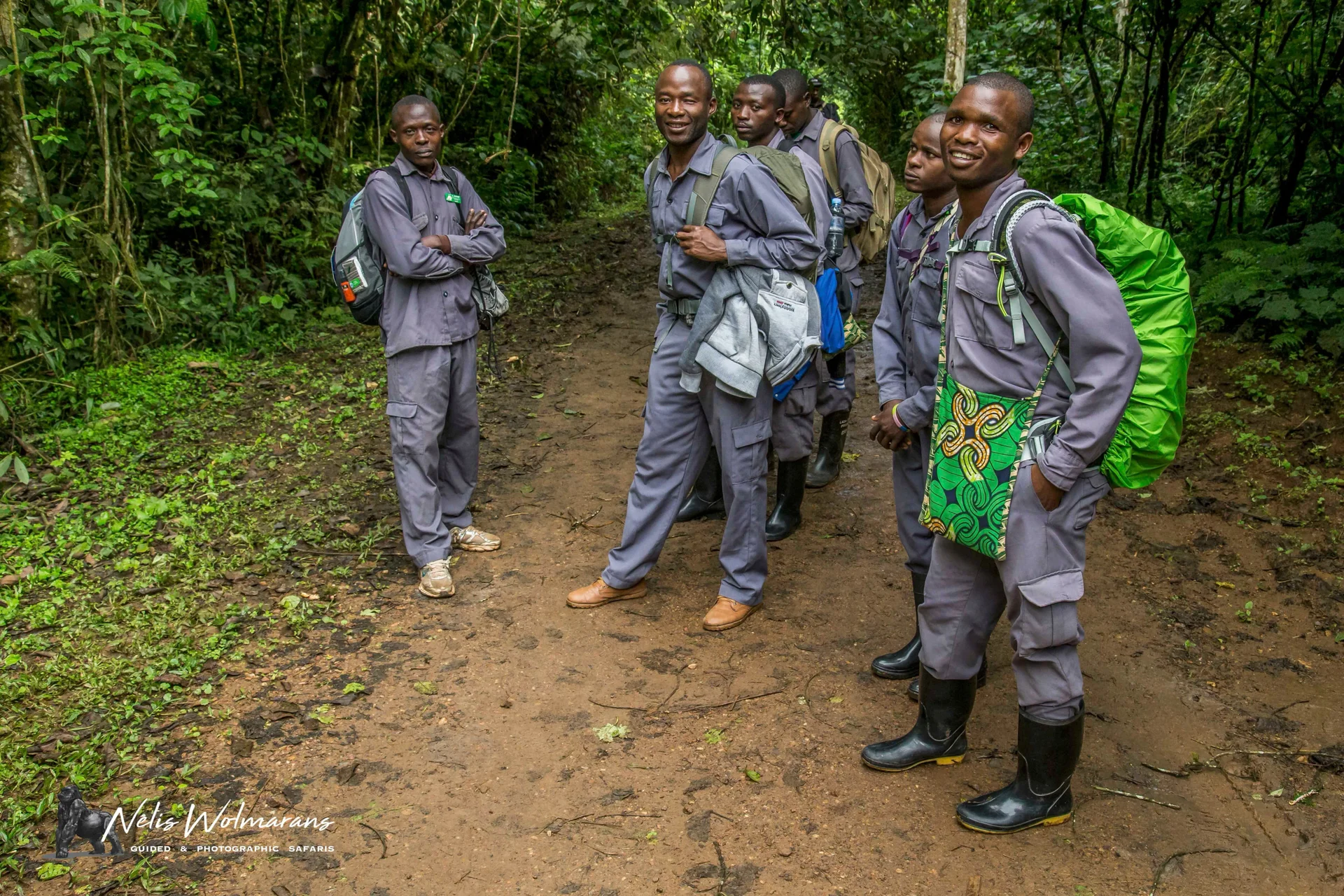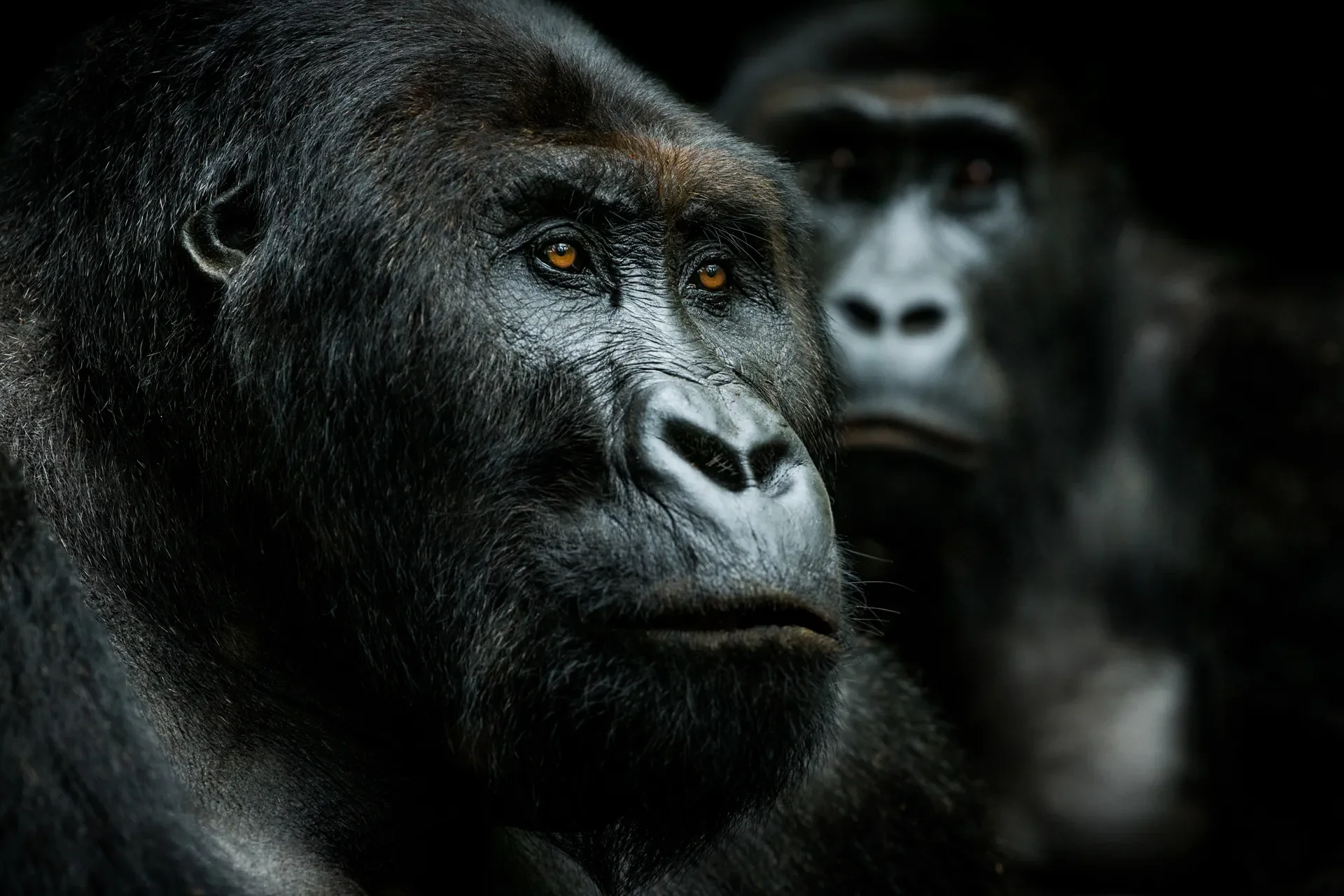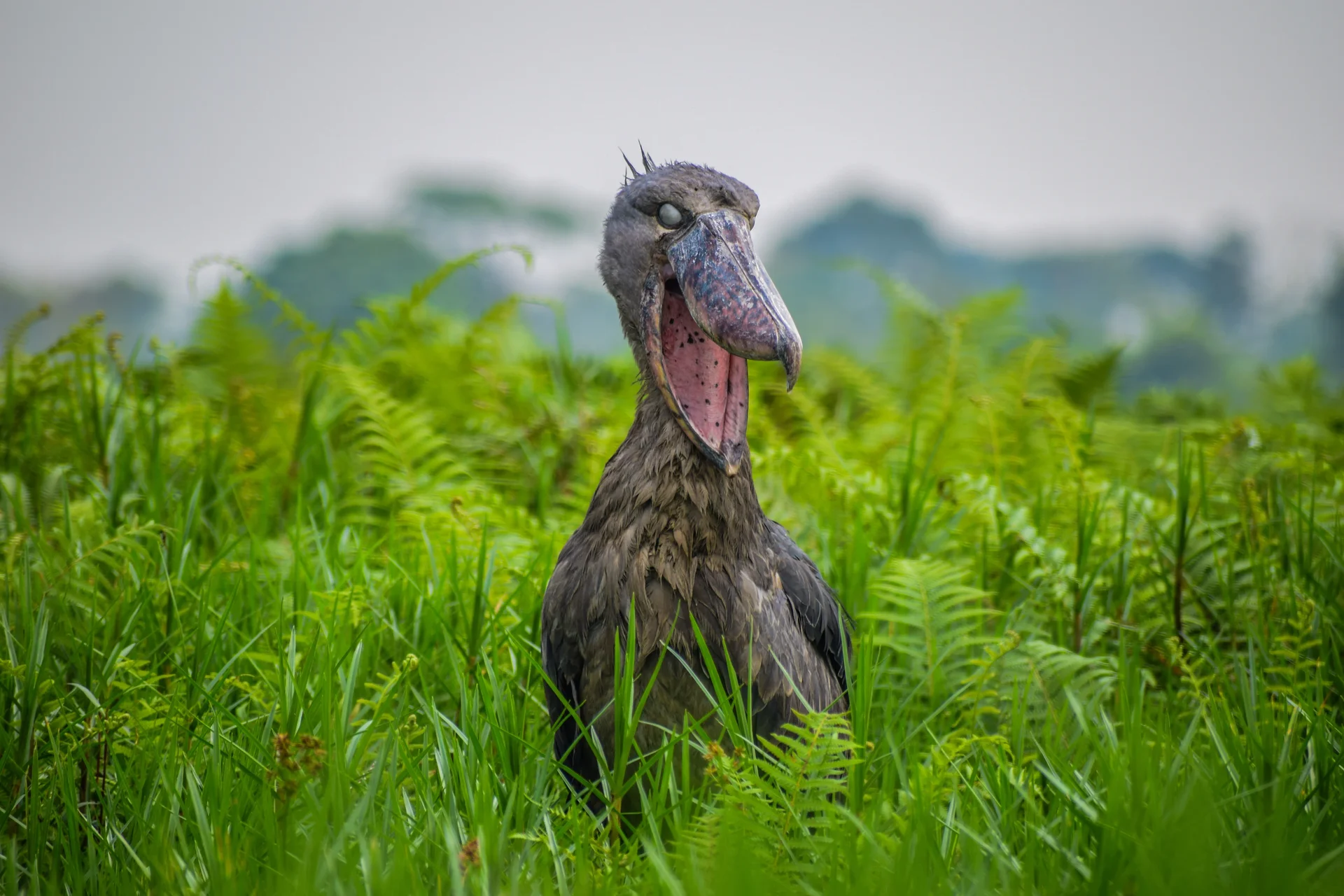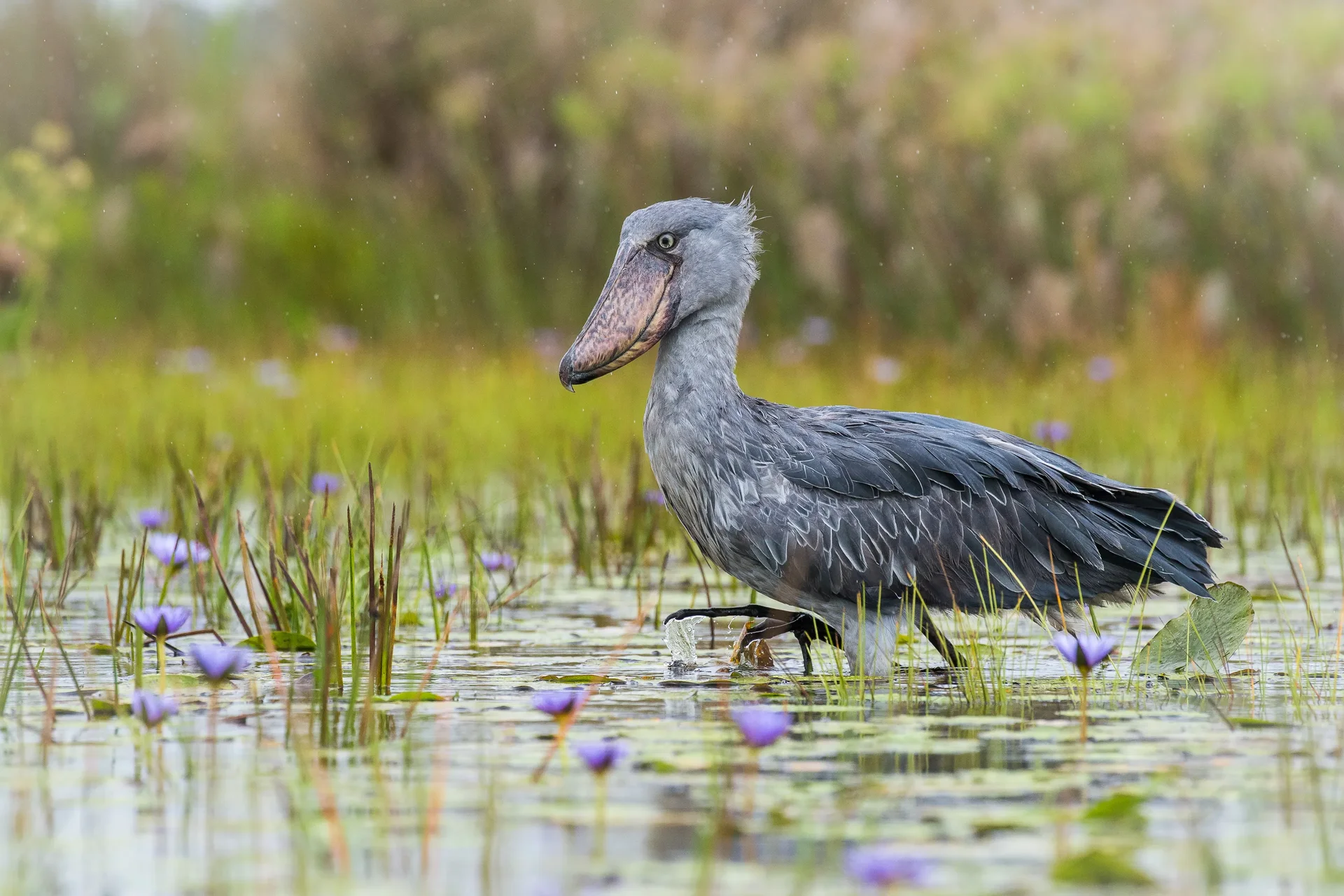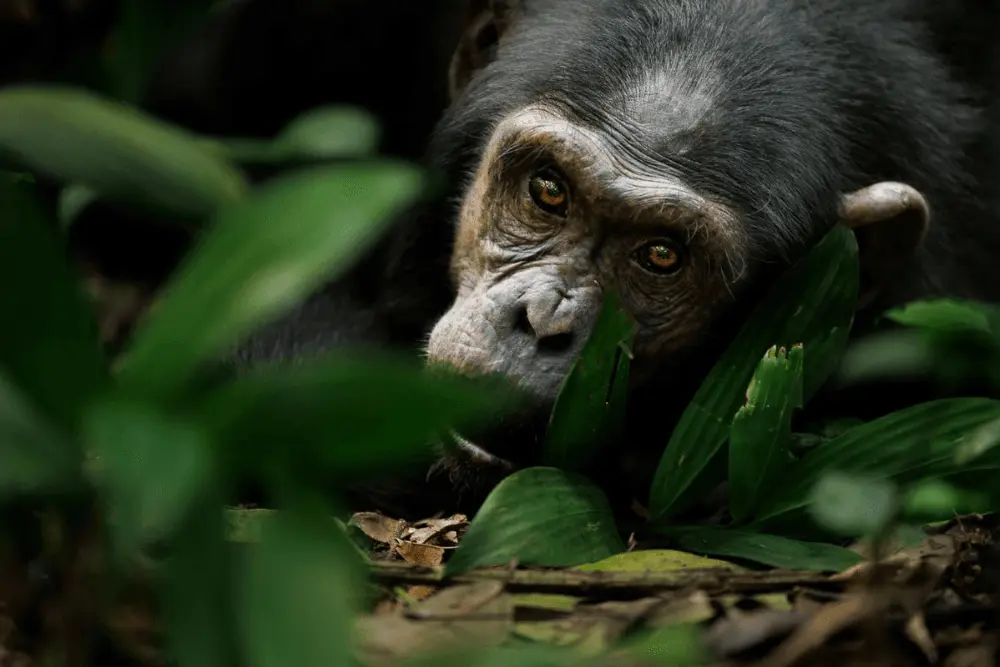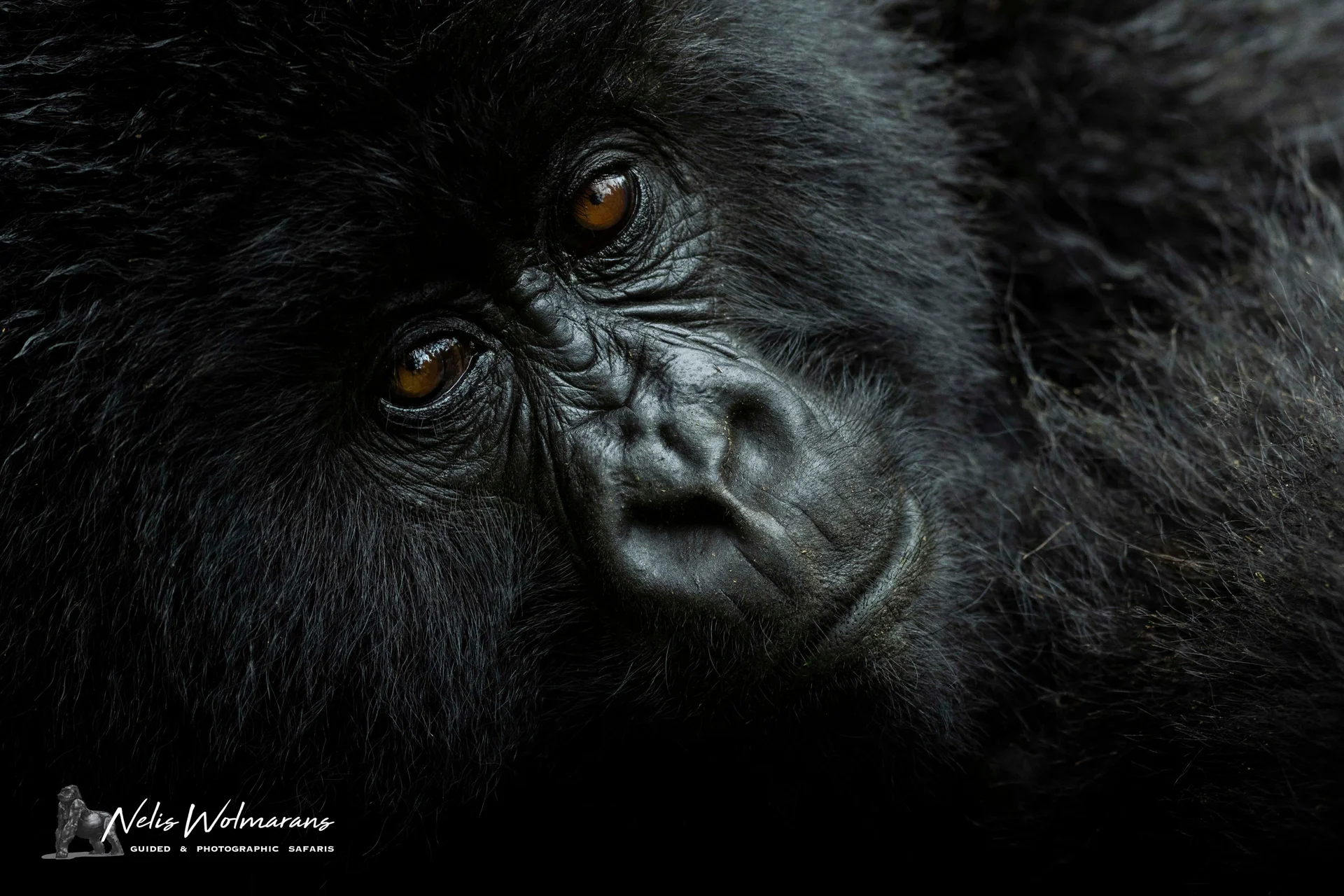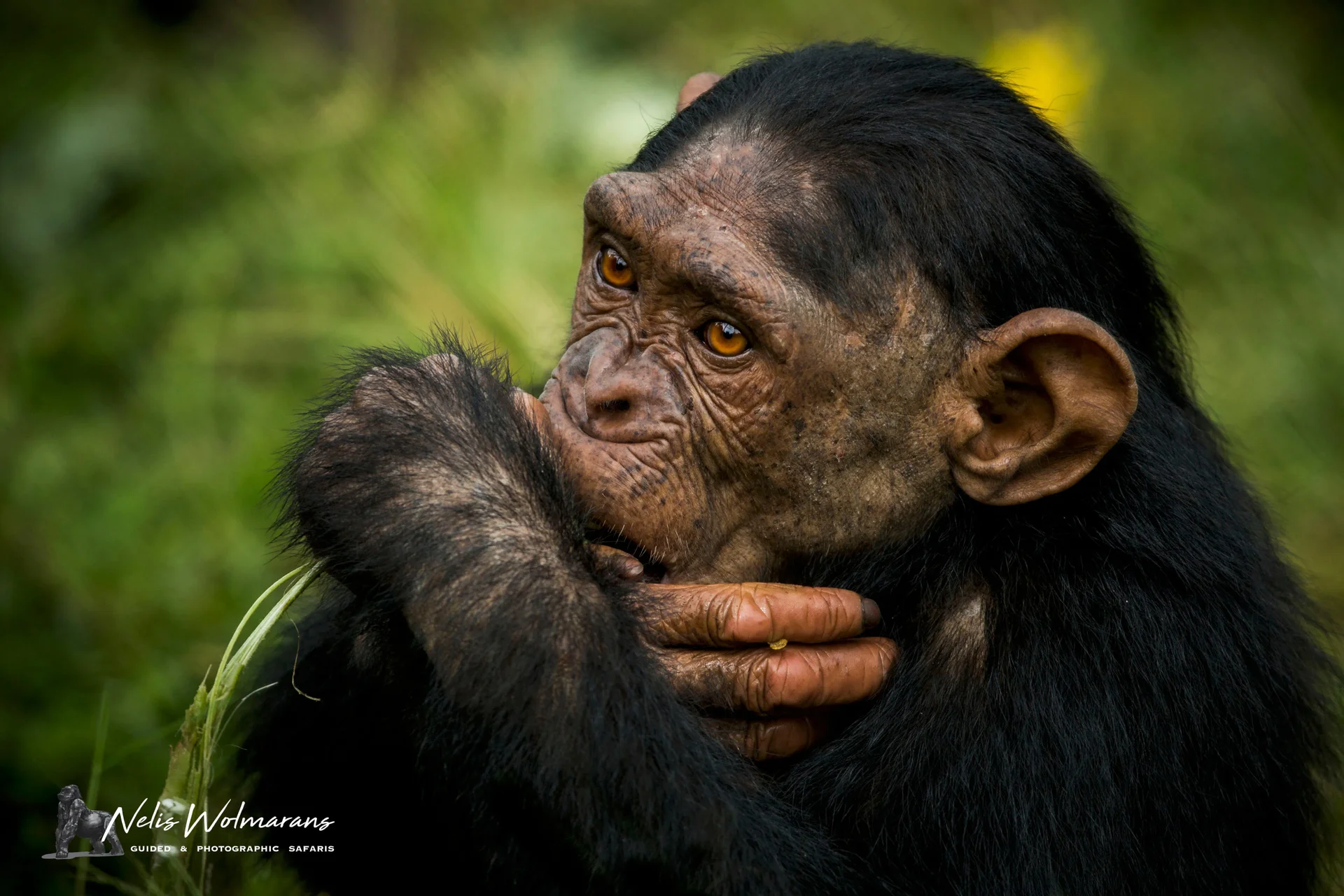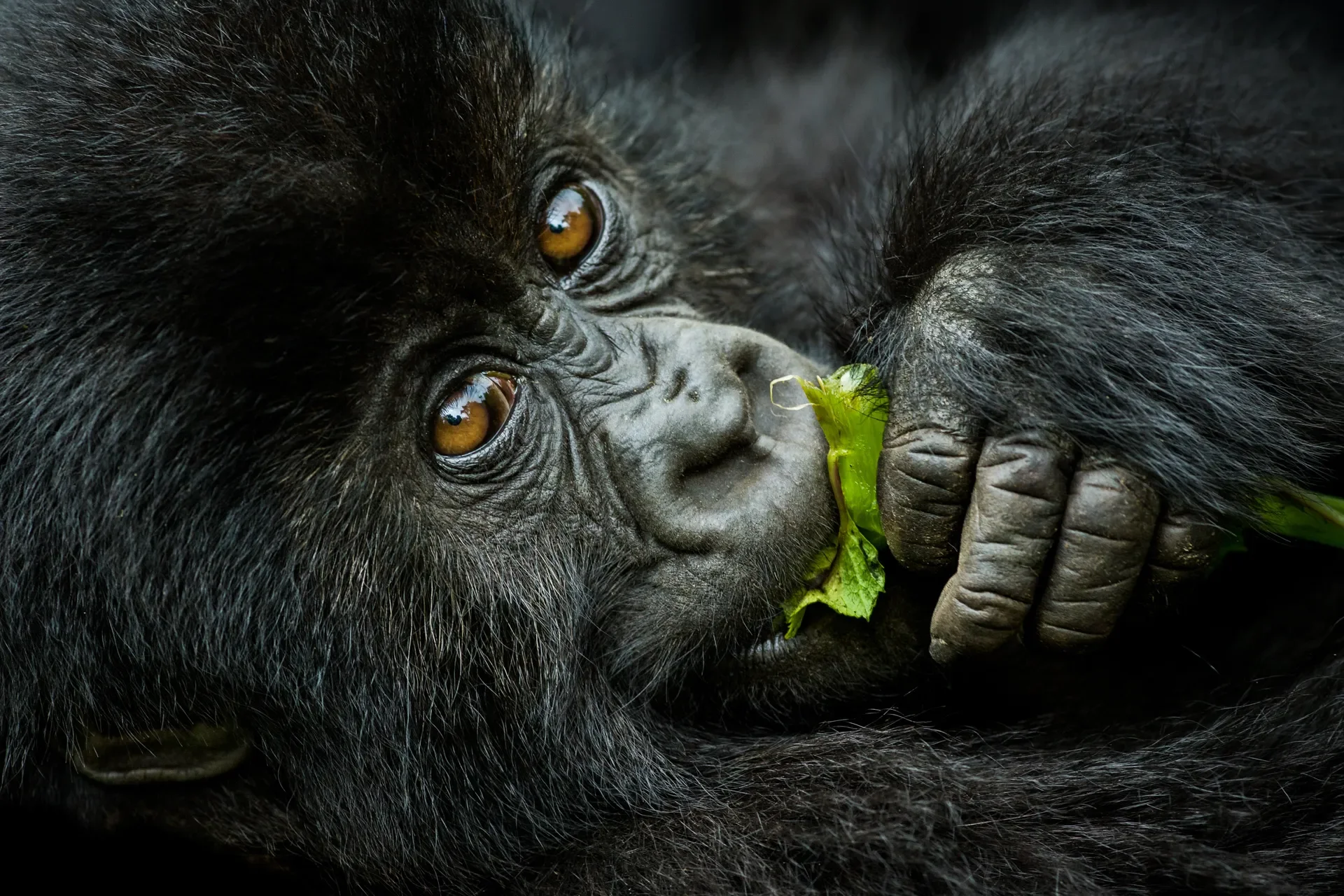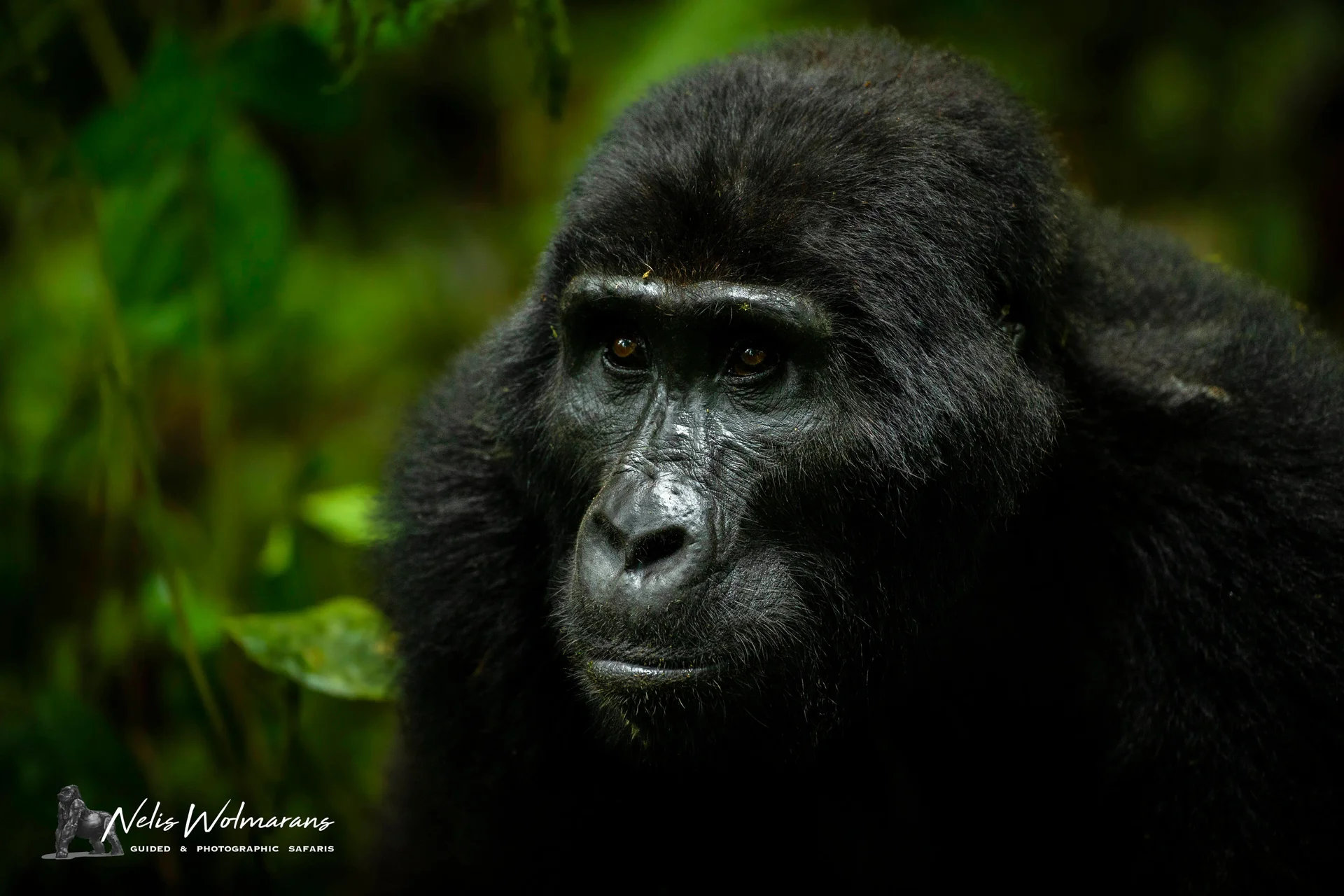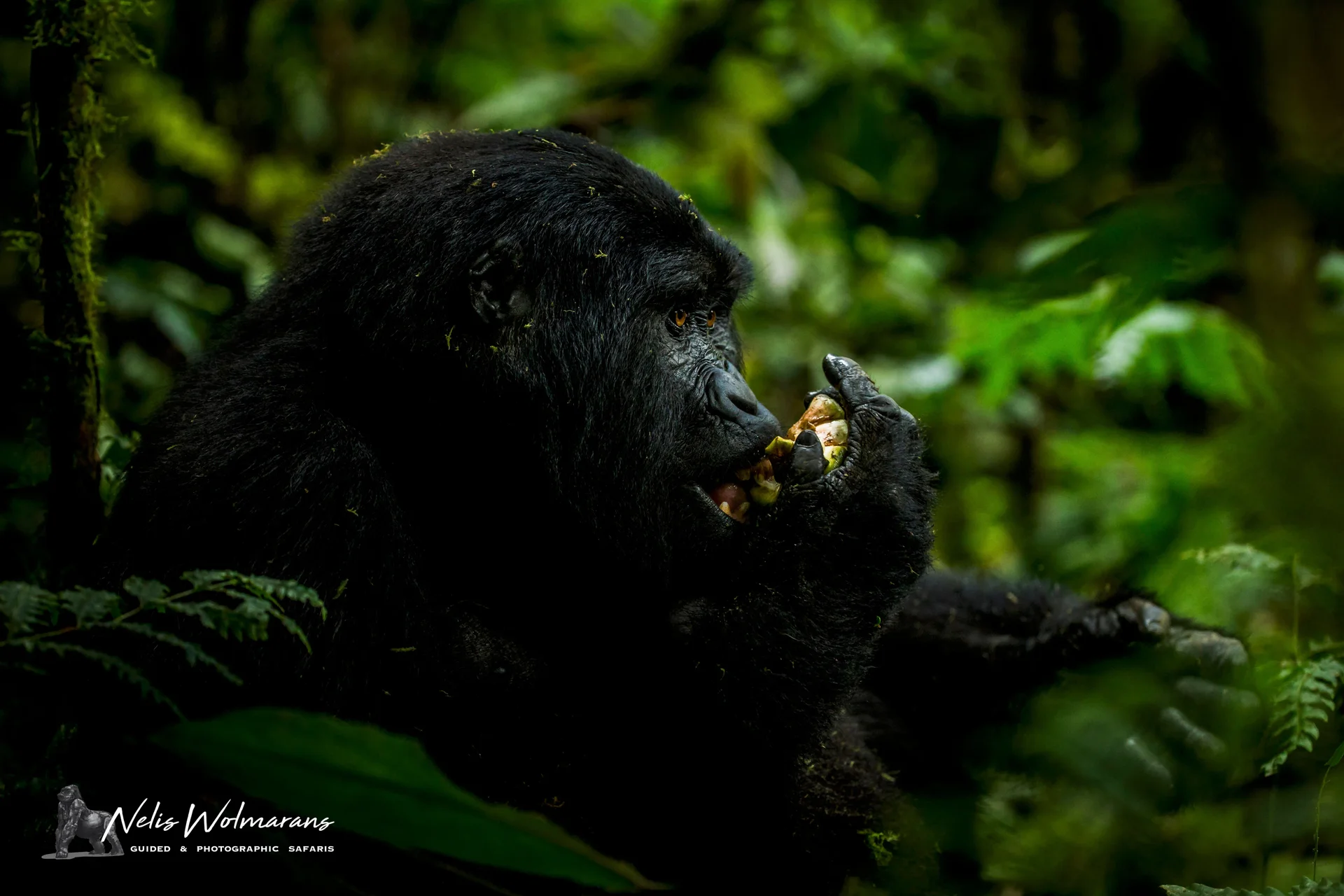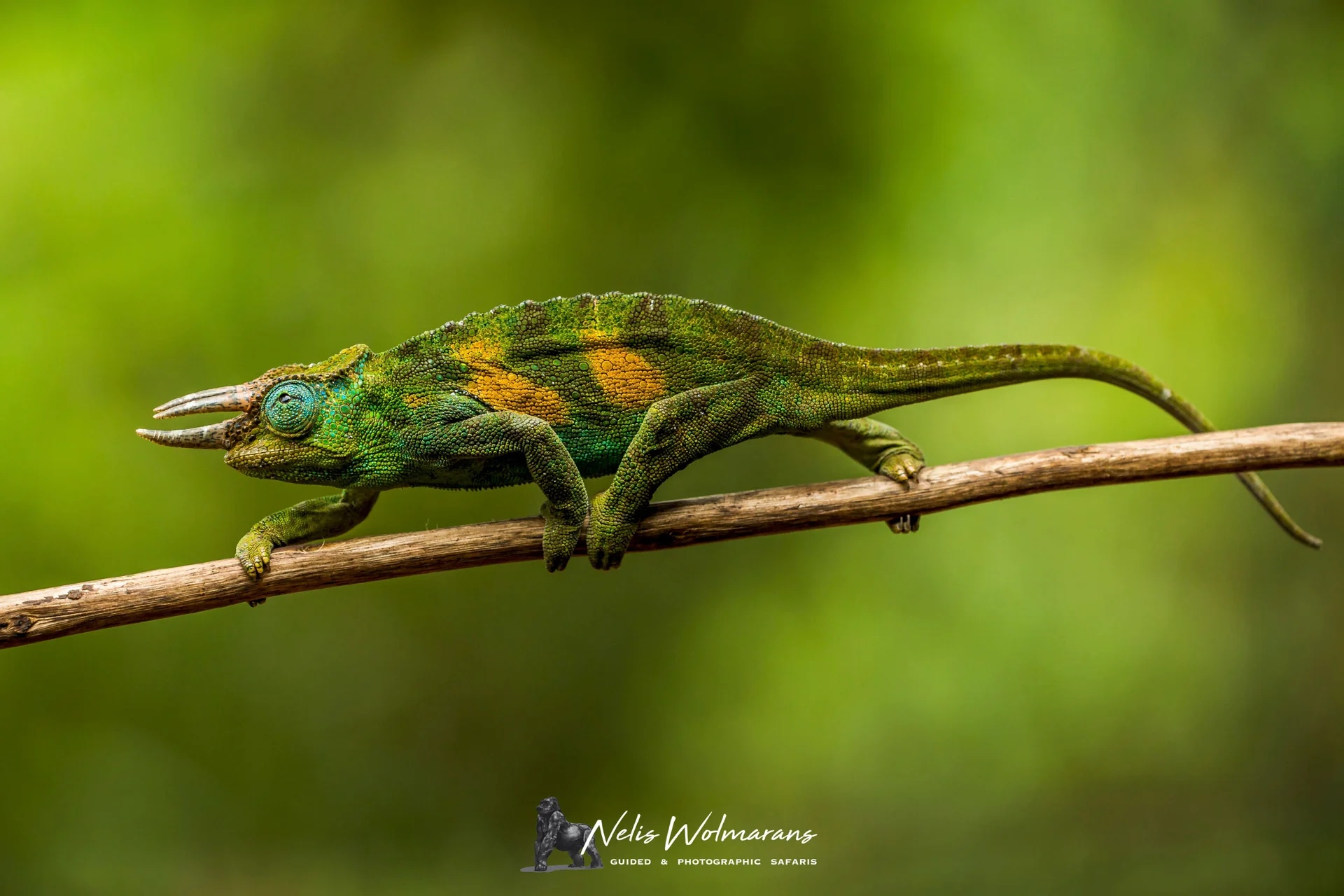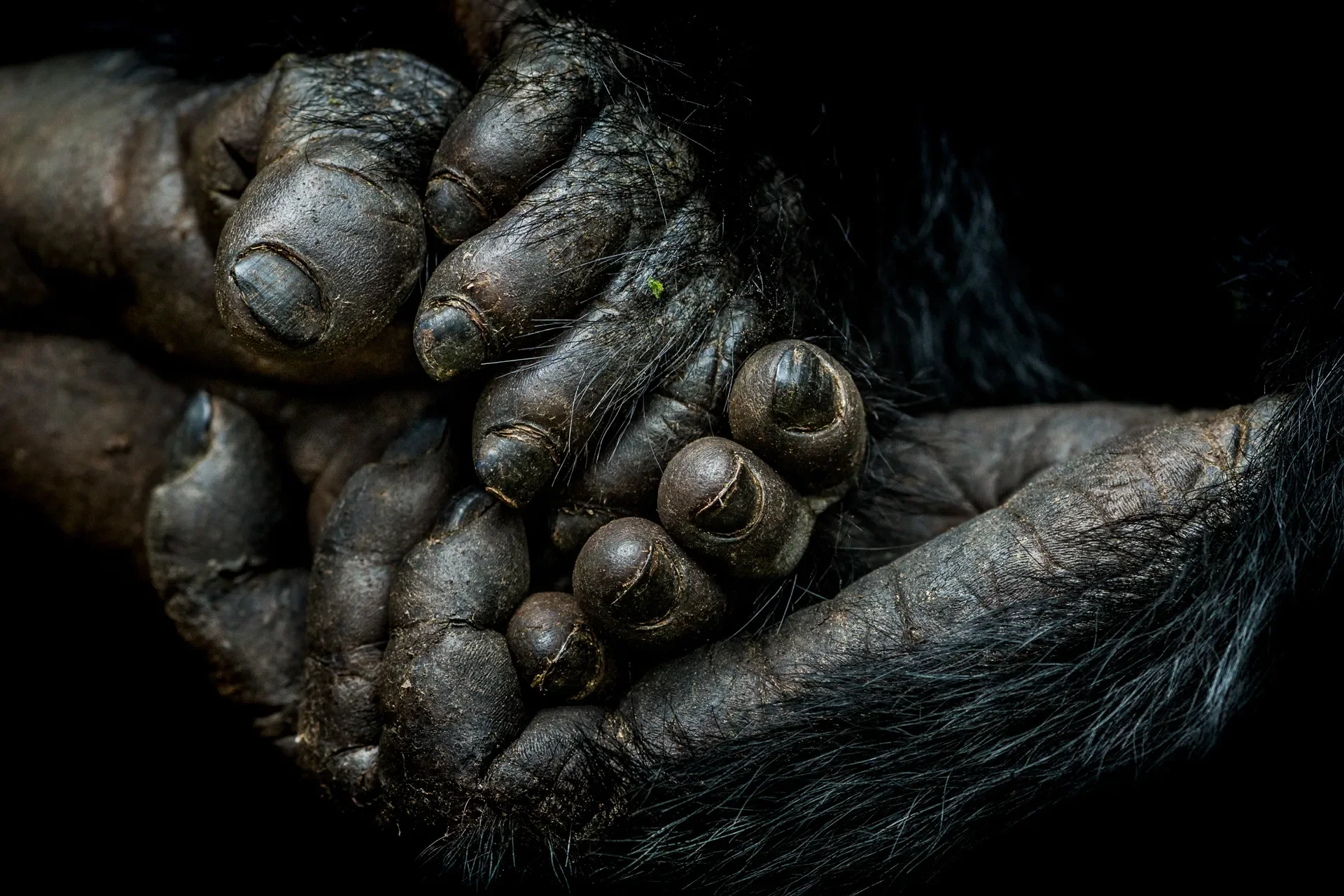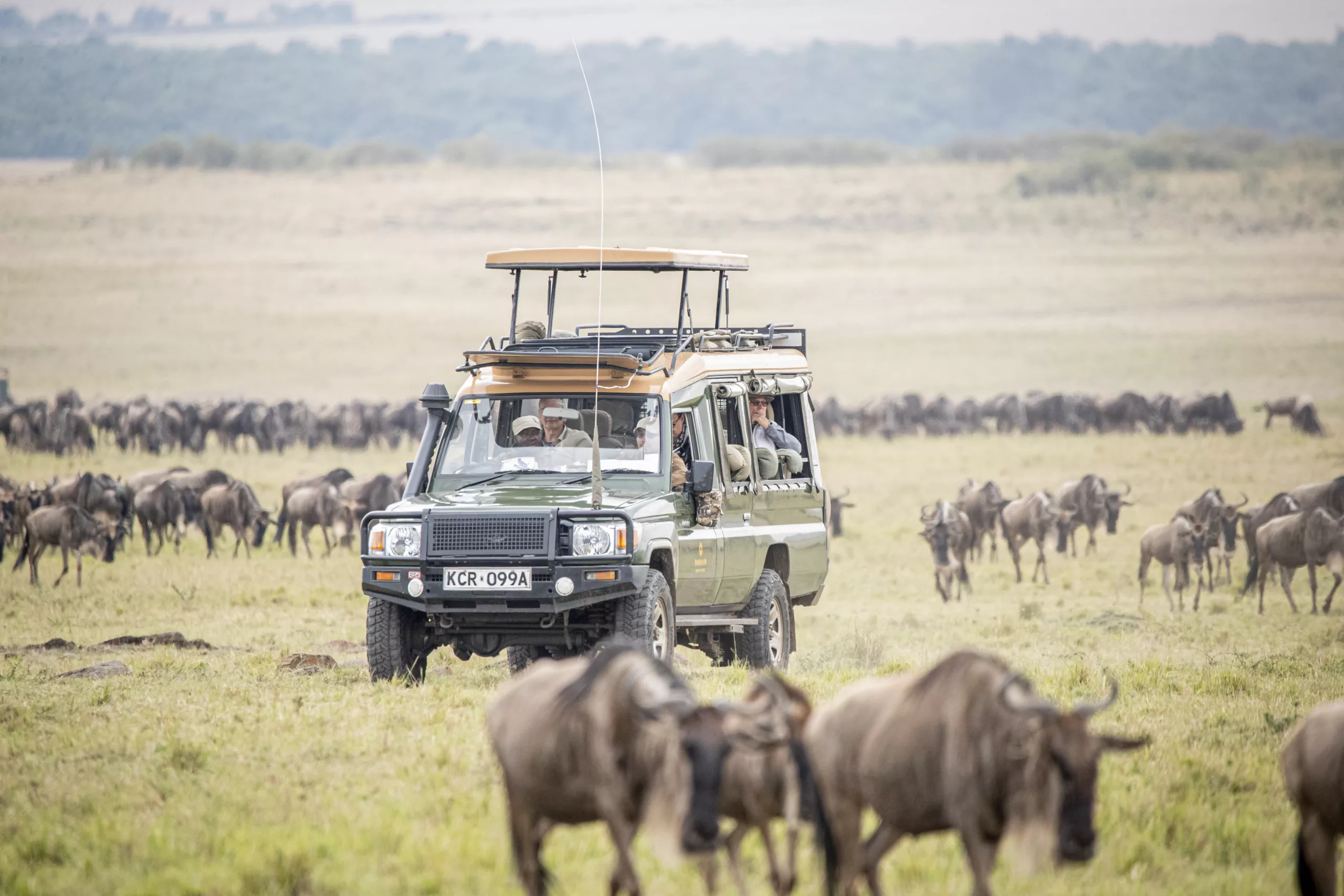Project Description
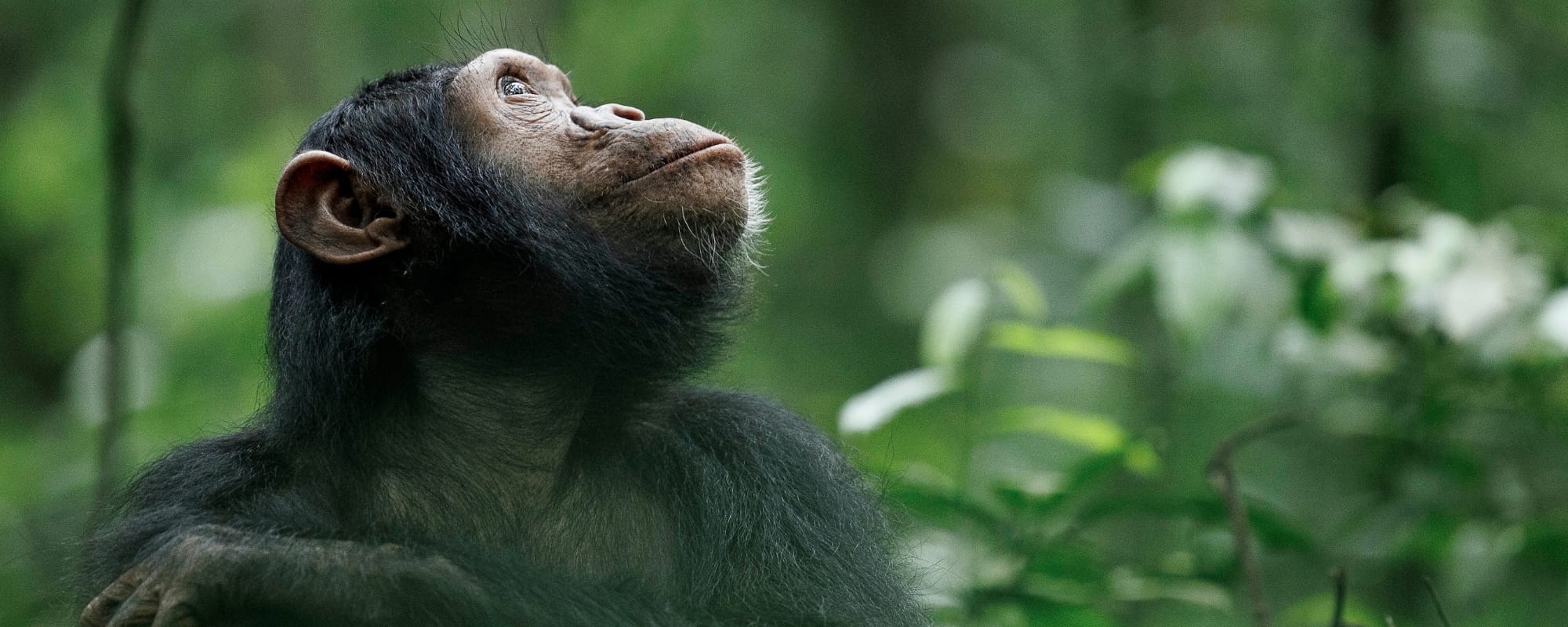
Chimpanzee and Gorilla Trekking in Uganda
Gorilla trekking to photograph mountain gorillas is a “huge tick” for most wildlife photography enthusiasts. On this photo safari, you will do two gorilla treks as well as spend a day in the company of a troop of chimpanzees guided by your photo host Nelis Wolmarans.
Add to this the chance to see the amazing Shoebill stork and you have the best Uganda photo safari package on offer!
This Uganda Chimpanzee & Gorilla Trekking photo safari is limited to a maximum of seven photographers plus your photo host. These dates are designed to dovetail with our Masai Mara Migration Photo Safari for 2026.
The Protea is only a 10-minute drive from Entebbe Airport. We have chosen to stay in Entebbe rather than the nearby capital Kampala, not only because it is more convenient but also because it is close to the Mabamba Swamps, where we will be photographing the African Shoebills the next day.
On the first evening, there will be a dinner at the hotel where the group will get to know each other. Your photo host will be available to answer any questions about your upcoming chimp and gorilla trekking adventure.
After breakfast, the group will head to the Mabamba swamps to hopefully see and photograph the fascinating Shoebill Stork—as well as the other 260 bird species that inhabit this corner of Uganda. The Mabamba Swamps are around 2500 hectares in size and are covered in papyrus, gerns, water lilies, and other grasses crisscrossed by waterways that we will explore by boat. The morning is preferred, when the shoebills are most active and hunting.
We will start the trip into the swamp from Banga Beach in a speedboat for the 30 to 40-minute cruise to a point where we transfer to smaller dug-out canoes to access the narrower channels where the shoebills live and hunt.
We will return to The Protea Hotel for a late lunch, and then, after a bit of rest, we will head out to see if we can find more Shoebills (and in case we didn’t get lucky in the morning). Doing both a morning and an afternoon will also offer different light and photo opportunities.
Either way, in the morning or the afternoon, your photo host will arrange an image review session at the hotel and a detailed briefing on what lies ahead for chimpanzee and gorilla trekking in Uganda.
We’ll depart the hotel in the morning and travel to Entebbe Airport to board our flight to Kasese, the nearest airport to Kibale Forest National Park. For the next three nights, our base will be either Chimpundu or Primate Lodge, both located on the edge of the forest. From there, we’ll embark on two treks over the coming days in search of chimpanzees.
We’ve arranged additional luggage allowance for everyone, including your camera gear – giving you 15 kg for general luggage and an extra 10 kg specifically for your camera equipment.If time permits on the first afternoon, we’ll enjoy a guided walk through the Bigodi Swamps, one of Uganda’s premier birding locations.
This area also offers excellent opportunities to spot primates like Black-and-White Colobus, Red Colobus, Blue Monkeys, and Mangabeys. You may also encounter Sitatunga and Bushbuck along the way. The walk is expected to last about 2–3 hours.
In the evening, we’ll gather at the lodge for dinner and an image review session before turning in early to rest for the next day’s adventures.
It is an early start with a quick breakfast, and then we head off into the forest at first light to locate the chimpanzees. This initial search can take an hour to two, depending on where the chimpanzees “nested” the night before. You will most probably hear them waking up before you see them. As with all wildlife encounters, nothing is guaranteed, but the success rate of finding the chimps during the day is over 90%.
We have opted for two 1-hour encounters as the members of the troop tend to be most relaxed and easy to photograph, as opposed to a “habituation” trek, which is longer with the chimps but they are wilder and more tricky to take photographs of. The clock starts as soon as the chimps are located, and you will have a full hour with these amazing animals. As they move, so do you, and they can move quite quickly as they head off to forage. They do, however, stop to rest, and that is when you will get the best shots of them interacting. The group could vary from a few individuals to a troop of over 20.
With chimps being so closely related to us, it is very easy to start to recognise individuals in the group, and the guides will be able to explain to you how the complex hierarchy works in the family you are with. Chimpanzees are incredibly social animals (expect plenty of grooming, fighting, and mating), and they are super curious, so don’t be surprised if you start wondering who is “visiting” who as they stare deeply at you! It’s an incredible experience!
The afternoon will be spent at the lodge reviewing your images with your photo host before dinner.
The next morning, we will set off on the second of our chimpanzee encounters, having spent the afternoon and evening before going through our images and deciding what shots you are going to seek out at the second opportunity. As we said, photographing in dense jungle can be challenging, so doing two treks on consecutive days is optimal, in our opinion.
Once again, there will be plenty of time to go through your images at the lodge afterwards.
This morning, we will head back to the airport at Kasese for the short flight to Kihihi, the closest airport to Bwindi.
And so on to the main event (although guests often say that the Chimpanzee tracking experience was certainly an equal!) gorilla trekking in the Bwindi Impenetrable National Park.
But first, we should address the elephant in the room.
Why do we choose to see mountain gorillas in Bwindi, Uganda, and not the Volcanoes National Park in Rwanda?
First, we need to appreciate that Uganda, Rwanda, and the Democratic Republic of the Congo share the same mountain range, which is home to the vast majority of the endangered mountain gorillas left in the wild. The gorilla families often disregard these borders and cross freely between the countries!
Over the last few years, Rwanda has adopted a marketing policy for high-end clientele with the development of several 5-star lodges and a massive increase in the price of the gorilla permits to over 3 times what they were only 5 years ago. As we like to go gorilla tracking twice on a safari, the gorilla permits would equate to $3,000. The cost of a gorilla trekking permit in the Democratic Republic of Congo is considerably less. Still, the situation on that side is so volatile that we are not currently running gorilla trekking tours there.
Uganda gorilla trekking also affords us the opportunity to see the other photographic highlights of the region—Chimpanzees and Shoebills—so this is why we have chosen to go to Uganda.
In the morning, we will head over to the park gate at either Buhoma or Ruhiji (which is a bit further away, but it all depends on what gorilla permits we are issued with) to allocate our gorilla family for the day and to start the gorilla trek.
We are often asked how long the average gorilla trek takes, and the answer is never simple. It depends on the gorilla family we are allocated on the day and where they spent the night before. The difficulty of gorilla tracking also depends on the above, but the group only moves as fast as the slowest member. There is no rush. The one hour with the mountain gorillas for the encounter starts when we find them.
We always suggest employing a local porter to help with camera gear, but more importantly, this is an important source of income for the local communities.
We have conducted a detailed interview with Nelis, with plenty of advice on what to expect on a gorilla trekking safari. We suggest reading that for all the questions you might have. Here is a link.
When you first encounter mountain gorillas in the wild, it can be a most profound experience. No barriers or boundaries separate you from being in a vehicle. It is you and these gentle giants coexisting for a brief while where the mountain gorillas live. It is so profound that we always do two gorilla trekking excursions on each of our gorilla tours so that when you do the second, the adrenaline has subsided a little, and you can focus on your settings.
Of course, your photo host will be right by your side, suggesting shots to take and settings to use throughout the gorilla trek.
After the gorilla trekking on both days, you will return to Buhoma Lodge to review your images and start with some editing. After the first gorilla trek, your photo host will provide valuable feedback and suggestions on how to improve your shots for the next day of gorilla trekking.
As you might have seen from William’s recent video, there is a pangolin rescue centre close to the lodge, and if time allows, your host will try to arrange a visit. We have left this as an optional visit as it depends on how the group feels after the treks and if we have time. The entry fee is around $40, and there may or may not be a pangolin in residence (it’s a rehab centre, not a zoo), but either way, it’s a fascinating place to visit, and your entry fee goes to supporting the centre. If you haven’t seen William’s video, click here.
The last morning of our gorilla trekking adventure sees us heading back to the airport for the short flight back to Entebbe. Of course, Uganda offers other destinations, such as Murchison Falls National Park (a birding hotspot of note) in the north of the country, which is well worth a visit. Should you wish to tack this onto the trip, please let your safari planner know.
We will get back to Entebbe International Airport in time for most connecting flights, but should you need to overnight, we can also arrange this for you, as well as all required airport transfers.
In addition to that East Africa is a hub of activity at this time of year with the Wildebeest Migration in full flow in Kenya’s Masai Mara. This set of dates is in fact designed to be an add-on to our own Migration Safari and you can see details of that here.
Dates & Rates 2026
23 August – 31 August 2026 (Photo Host: Nelis Wolmarans)
29 September – 7 October 2026 (Photo Host: Nelis Wolmarans)
Price: $13,450 per person sharing
If you are traveling alone and require your own room, there is a supplement of $3,000
- Entebbe Airport Meet and Greet
- 2 nights Protea Hotel
- 2 Excursions to Mabamba Swamps (Shoebills)
- Flights from Entebbe to Kasese (+10kgs extra luggage)
- 3 nights at Primate Lodge or Chimpundu Lodge – Kibale
- Two Habituated Chimpanzee Treks
- Flight from Kasese to Kihihi
- 3 nights at Buhoma Lodge
- Two Mountain Gorilla Trekking Permits
- Flight from Kihihi to Entebbe
- All meals at Protea Hotel, Primate Lodge & Buhoma Lodge
- Soft drinks and water throughout
- Image review sessions throughout the photo safari
- Guided by Nelis Wolmarans
- Visa fees if applicable
- Laundry and items of a personal nature
- Optional Gratuities
- Porters to assist with carrying your gear during the treks (approximately $20 per guest per day).
- Alcoholic beverage
- Pangolin Rescue Centre Entrance Fee
Suggested Add on
Why not make this the ultimate safari holiday and join the Great Migration Photo Safari before your trek?
Explore Kenya’s Masai Mara during the world-renowned great migration with The Pangolin Photo Hosts! Not only will you get the chance to photograph iconic scenes but you’ll also take in the vast wilderness of rolling plains during a hot air balloon ride. Sounds like the perfect start to your safari in Africa, doesn’t it? Learn more about this expedition here!
If you are looking for extensive advice on what to expect gorilla trek to Uganda then please take a moment to read this article. We did an extensive interview with Nelis about his experiences over nearly 100 gorilla treks. He talks about the trek, the encounter, what gear you should consider taking and some ideas on how to capture the essence of these magnificent creatures. You can find the article here.

